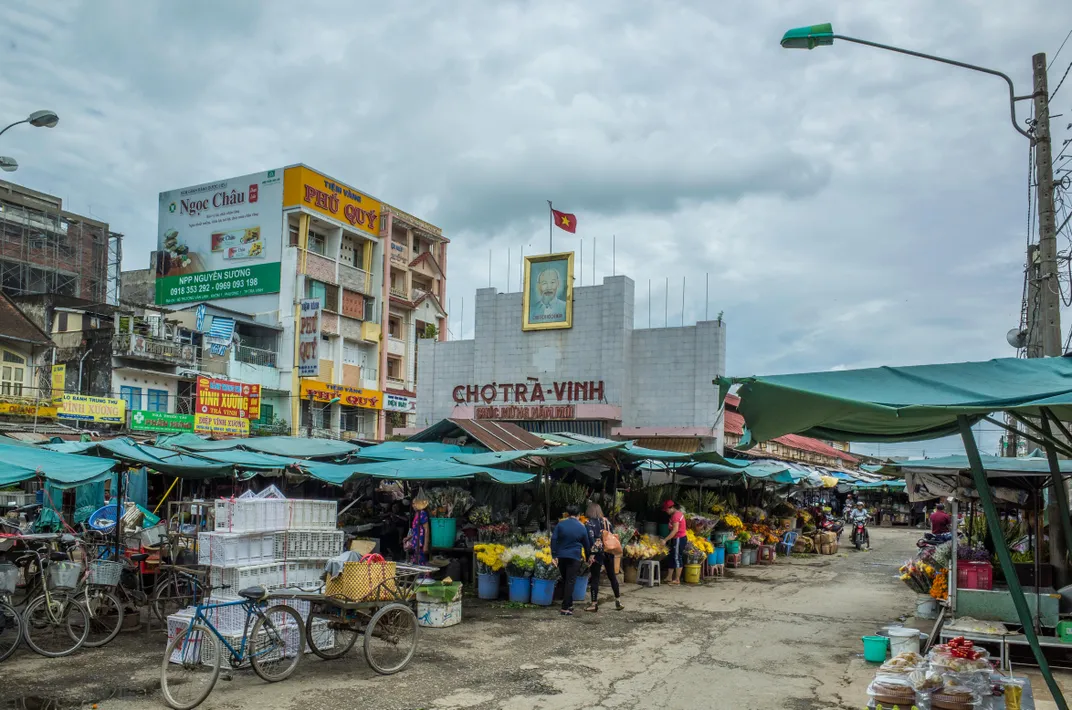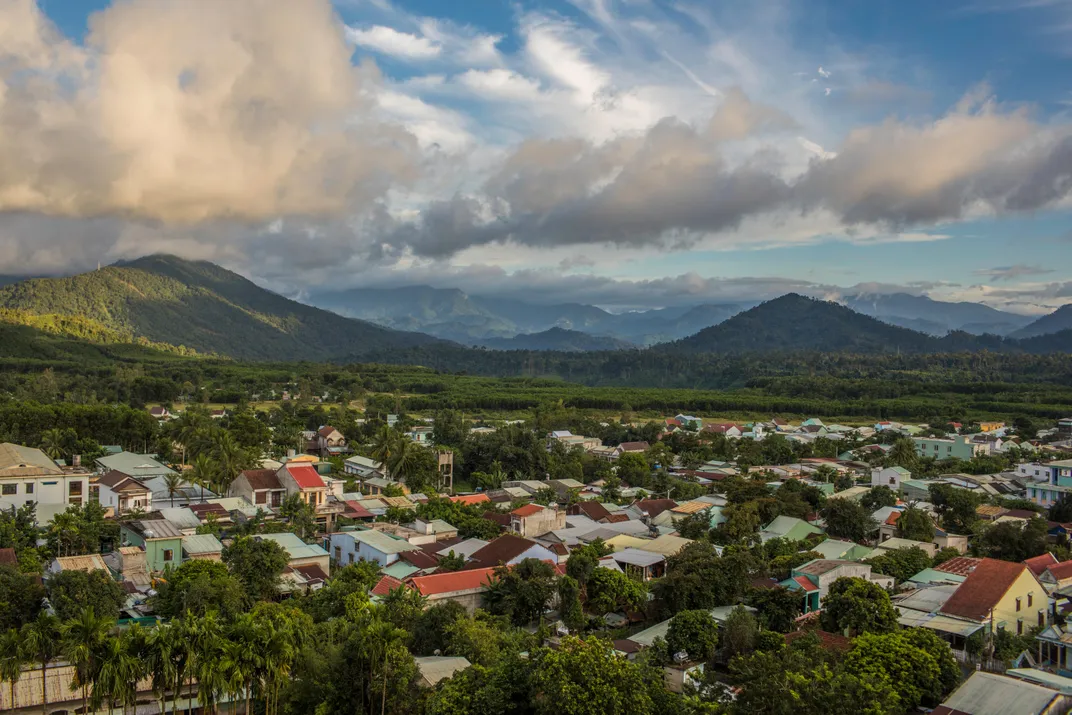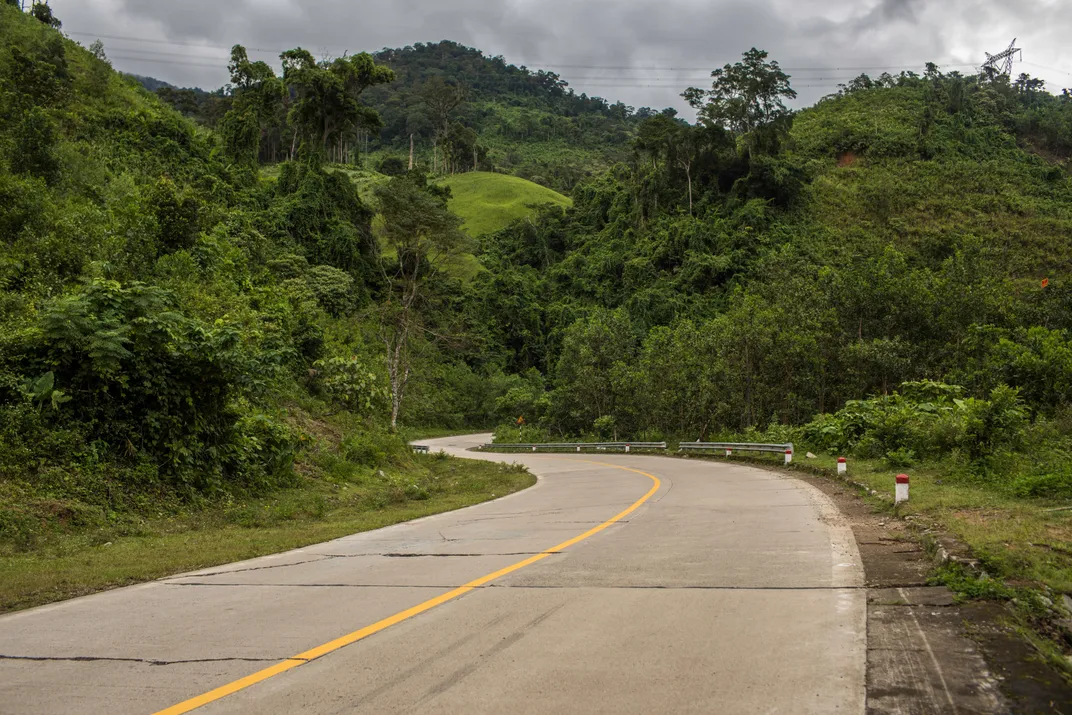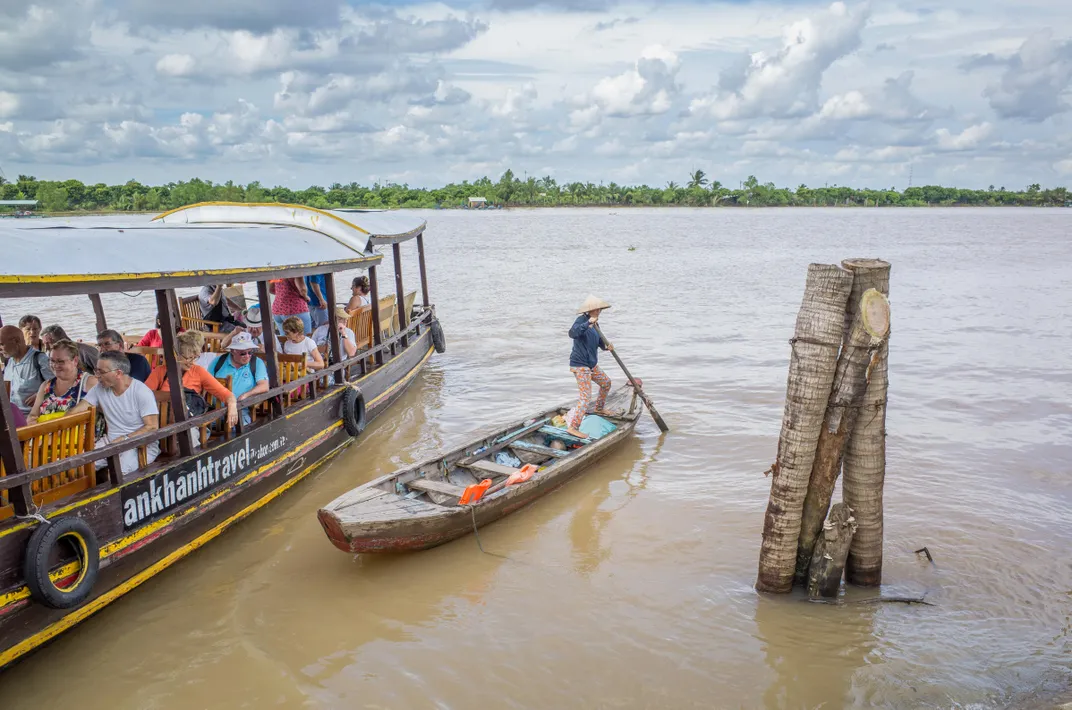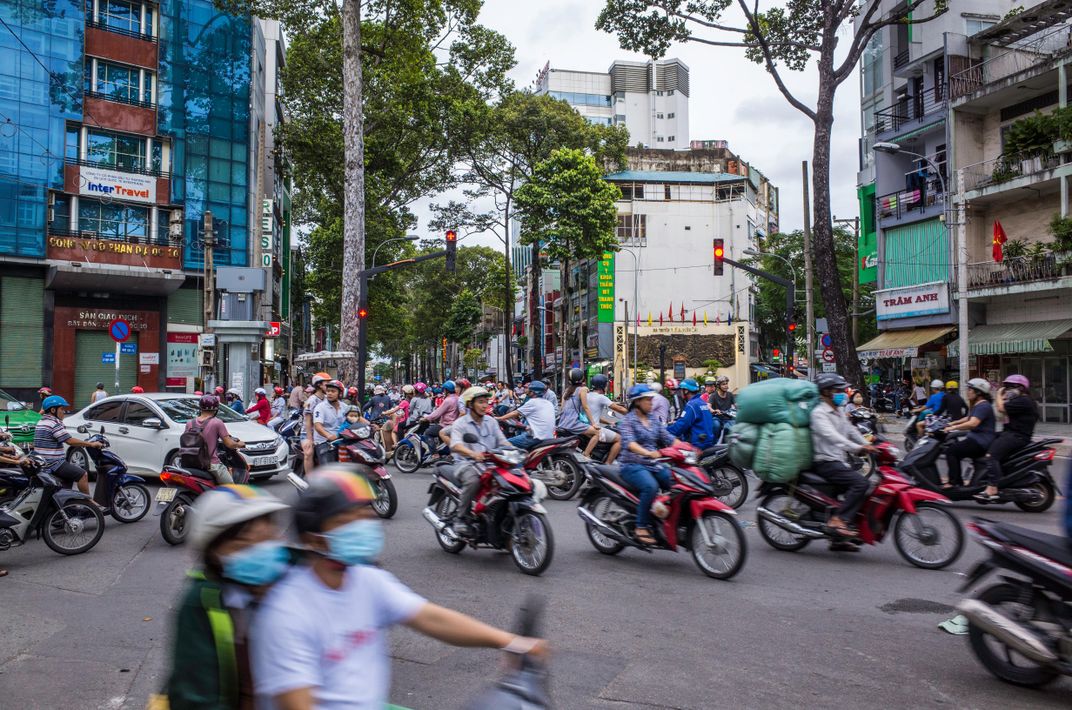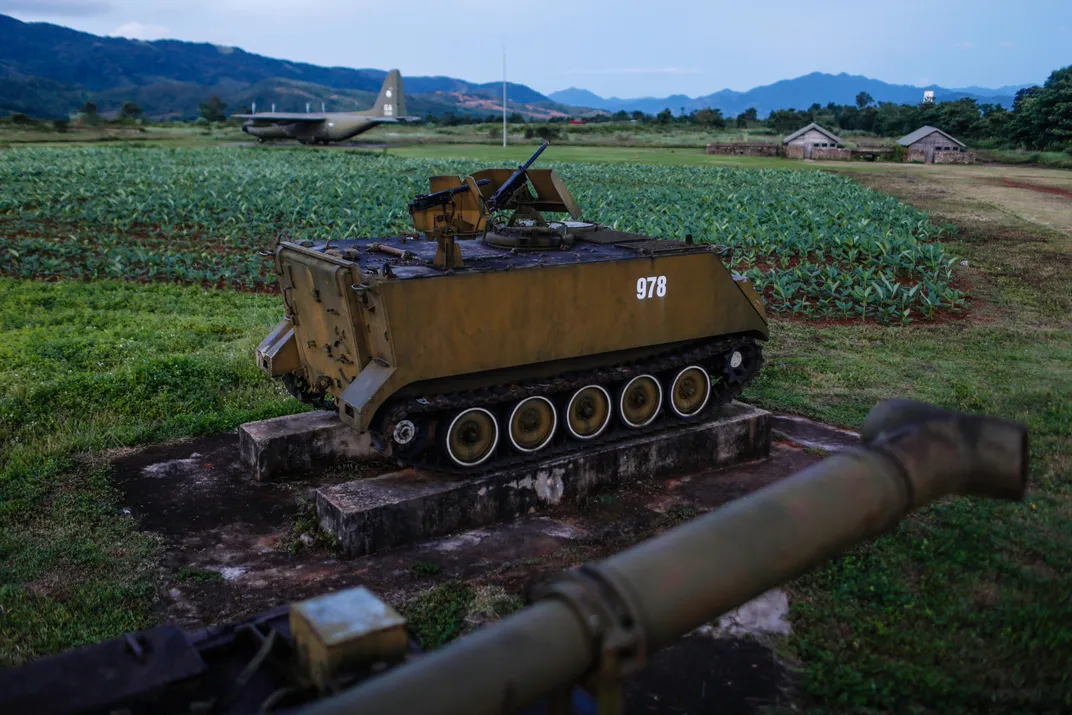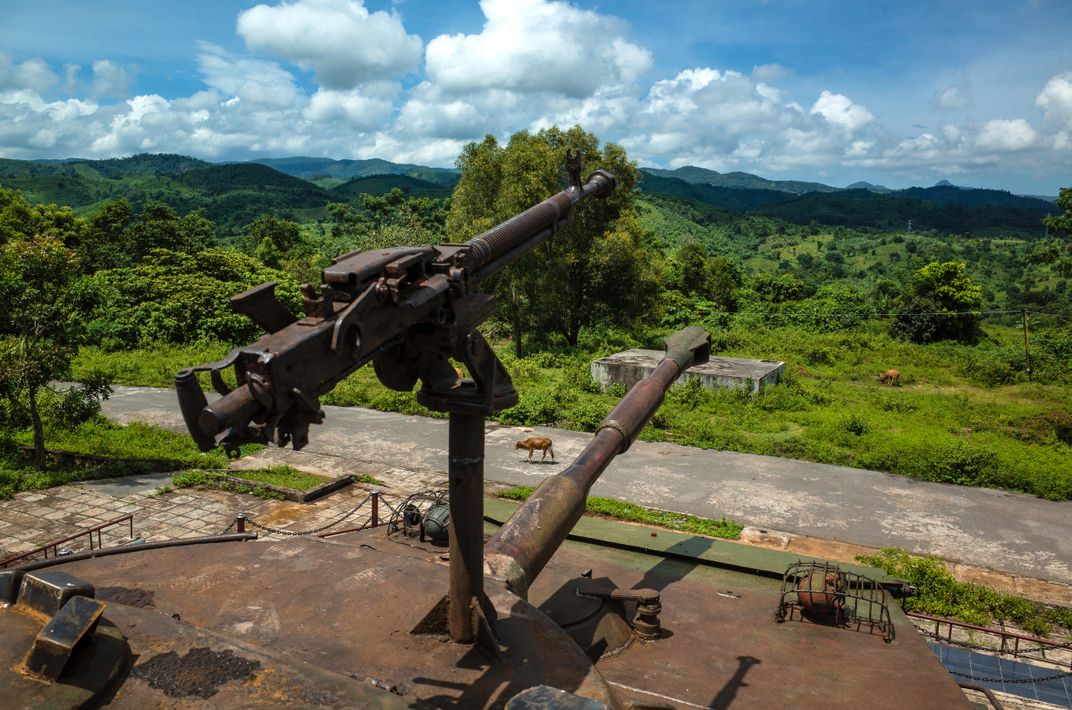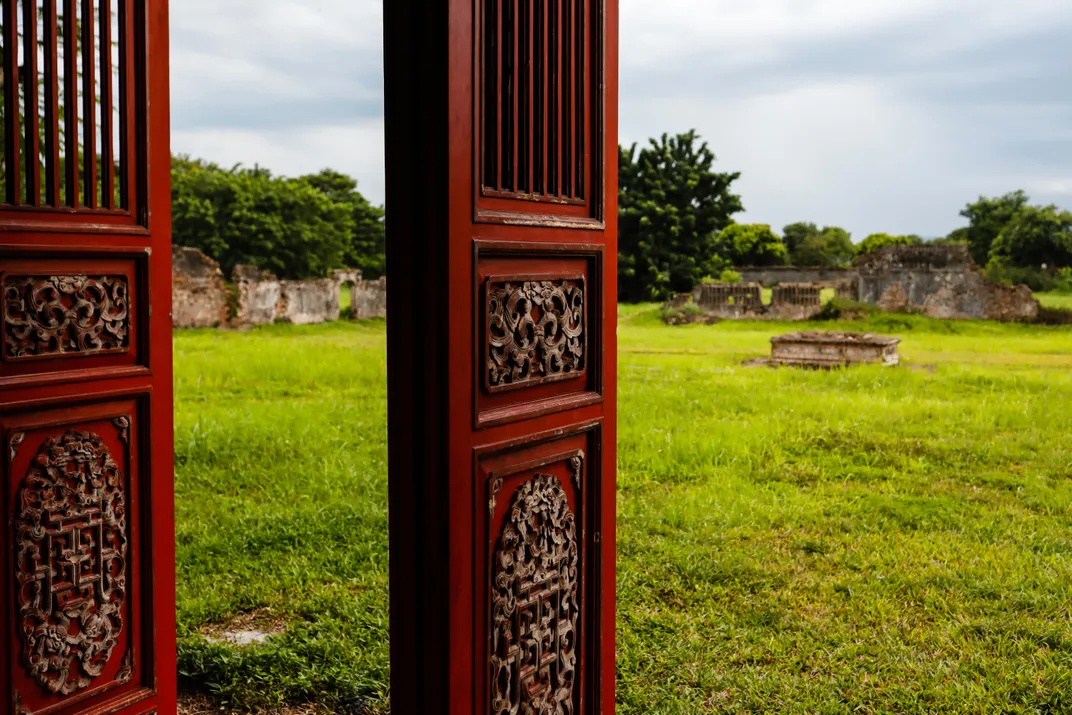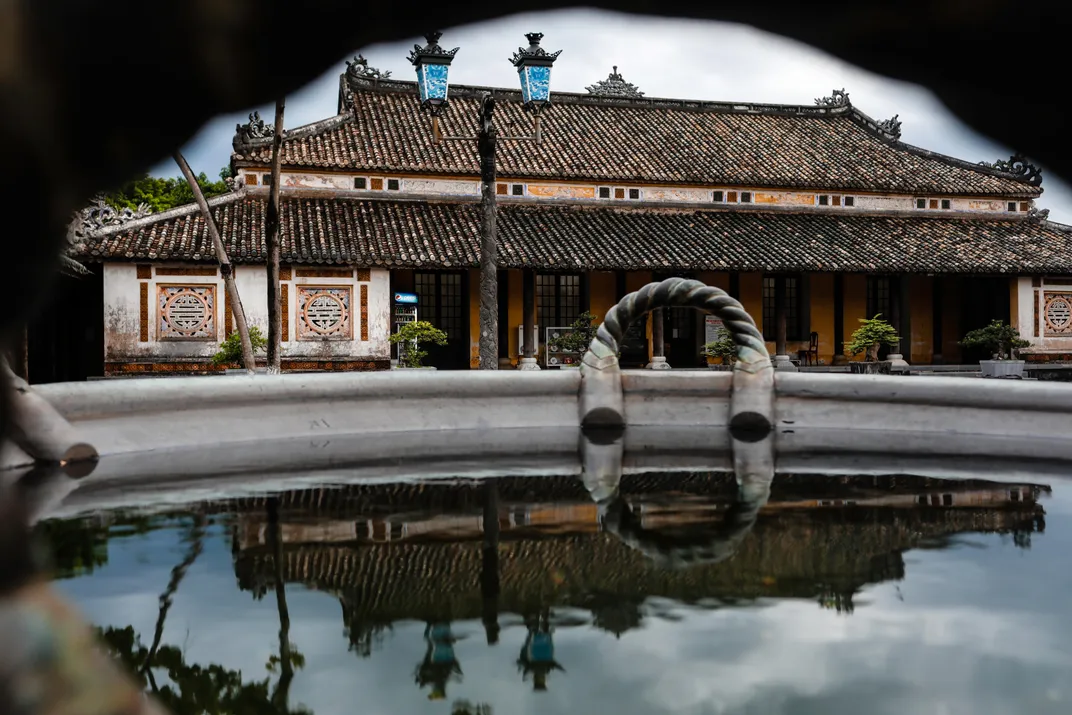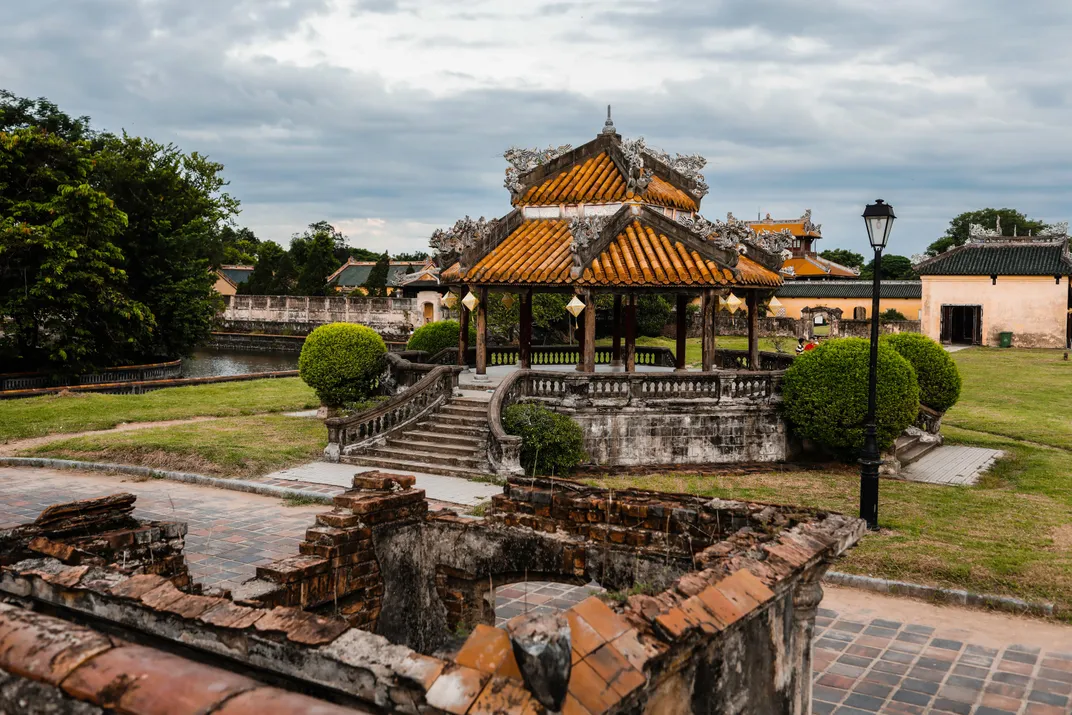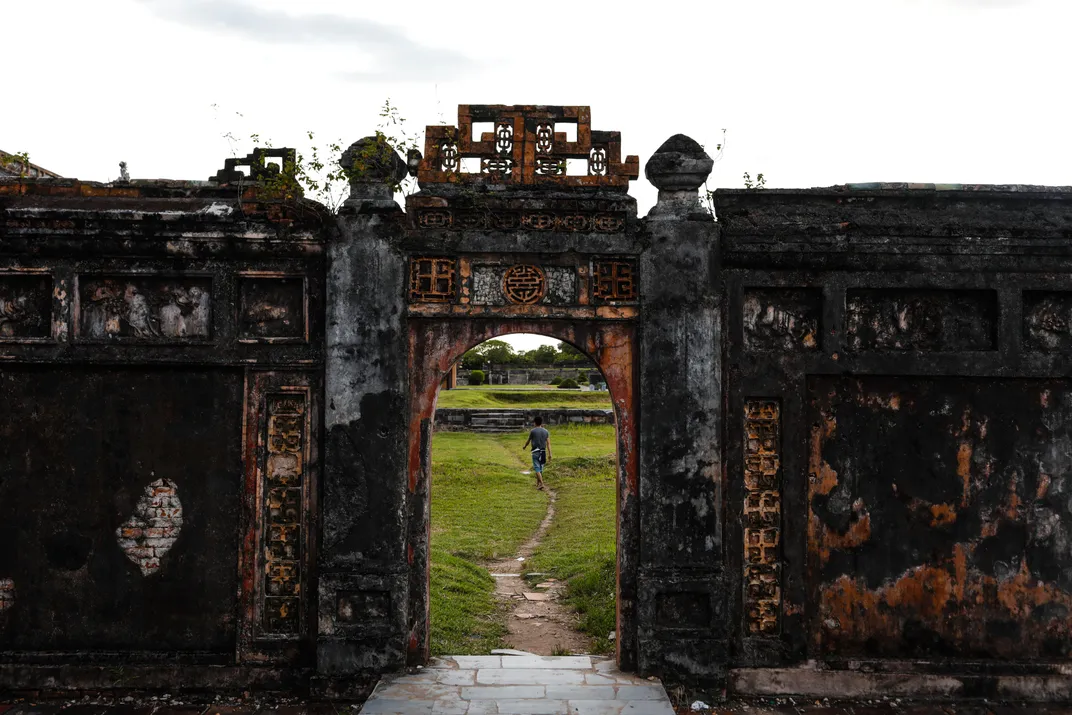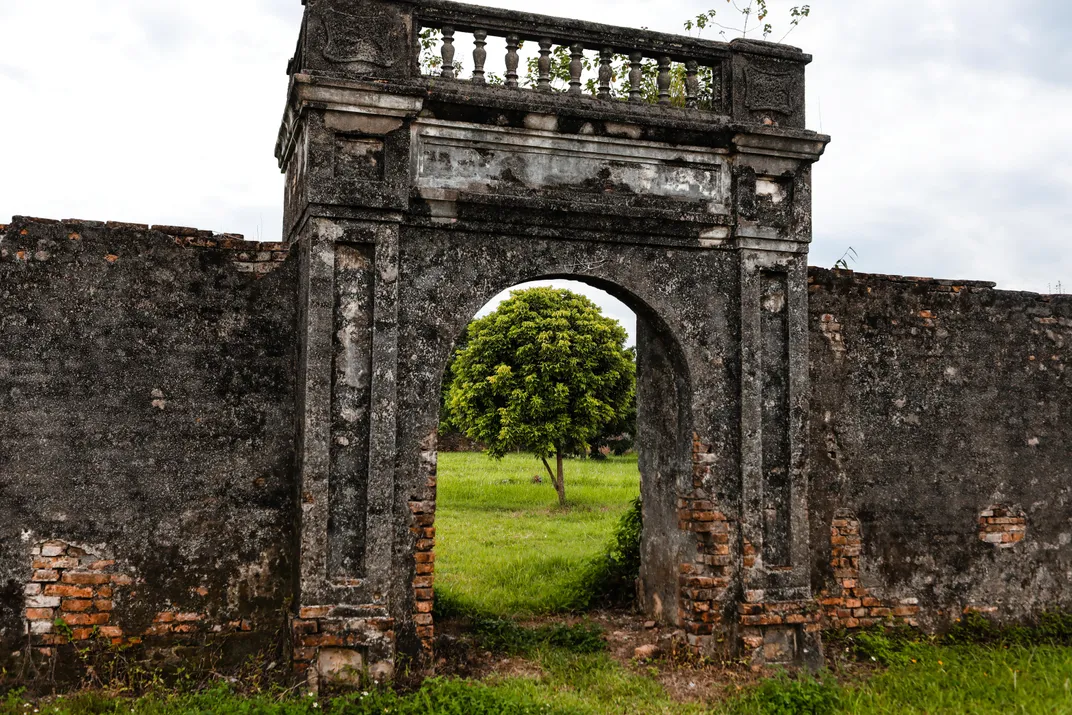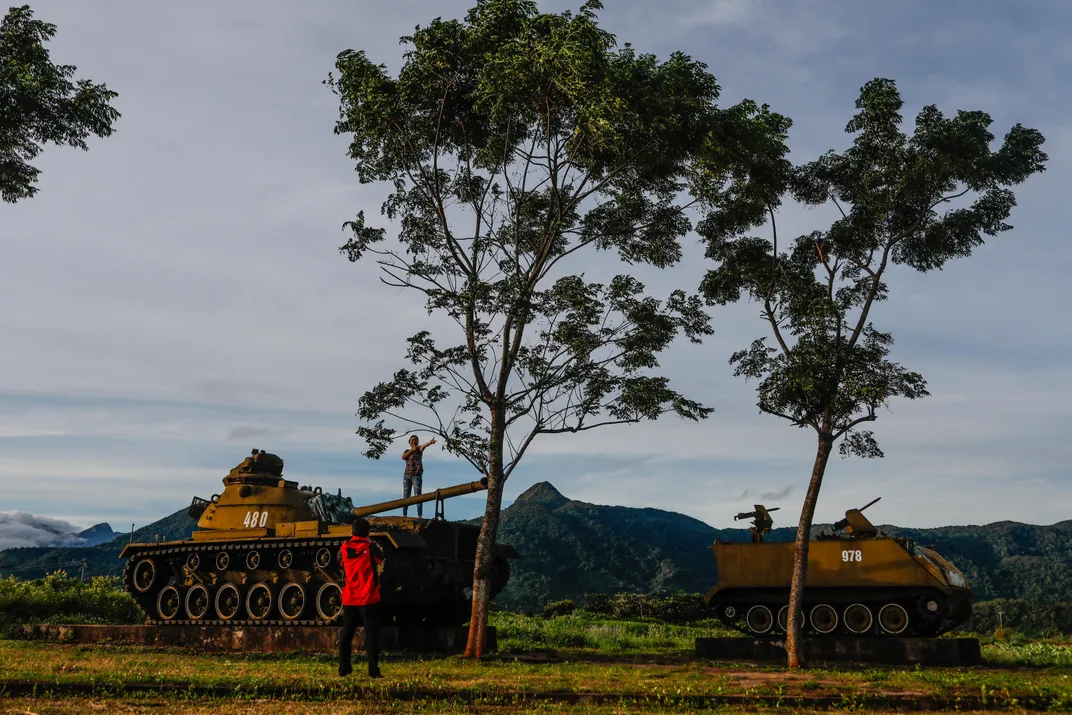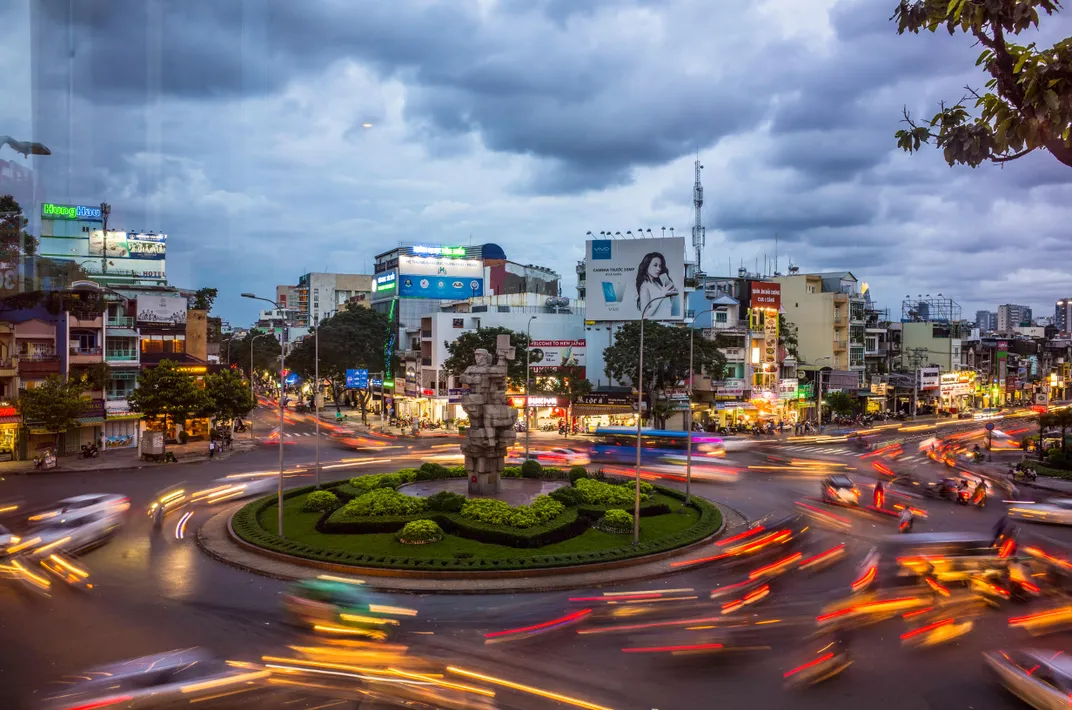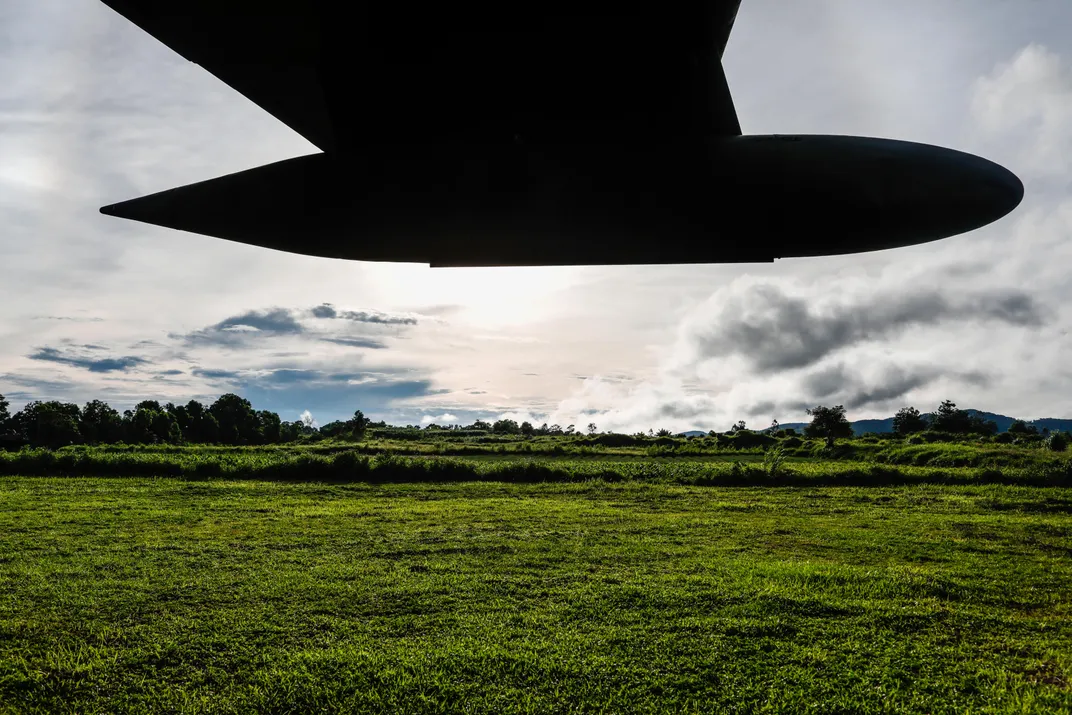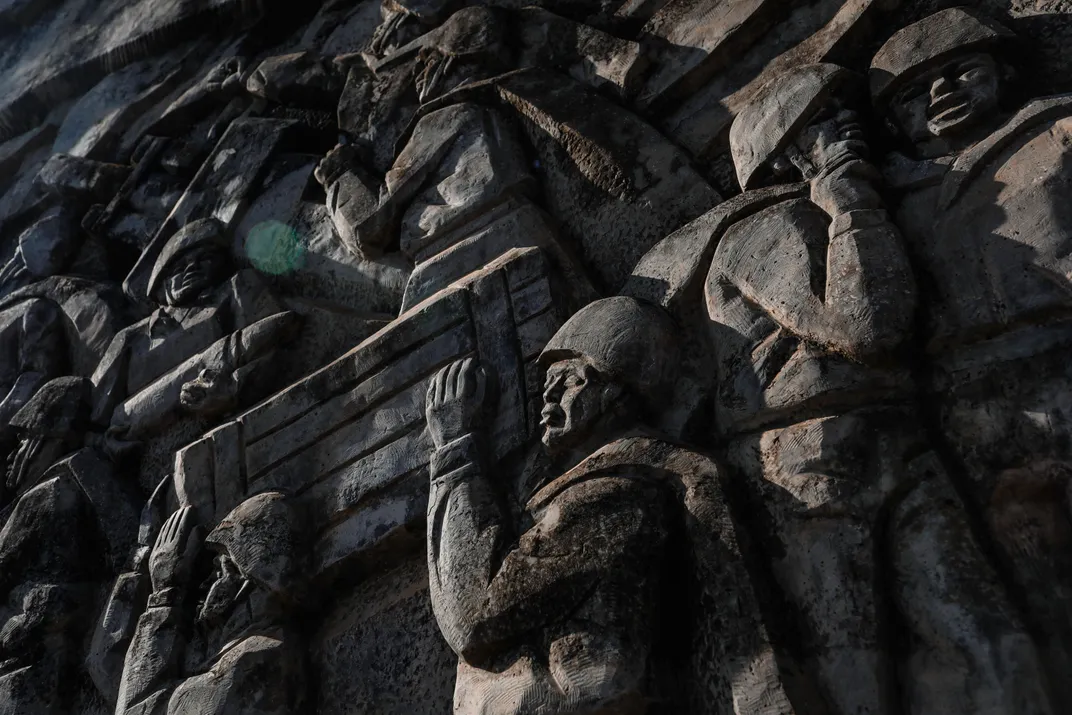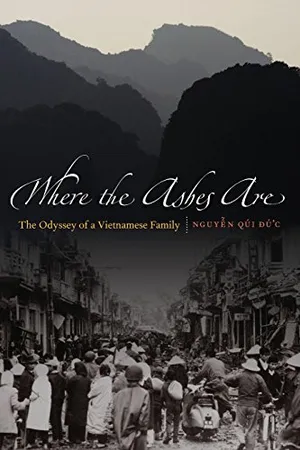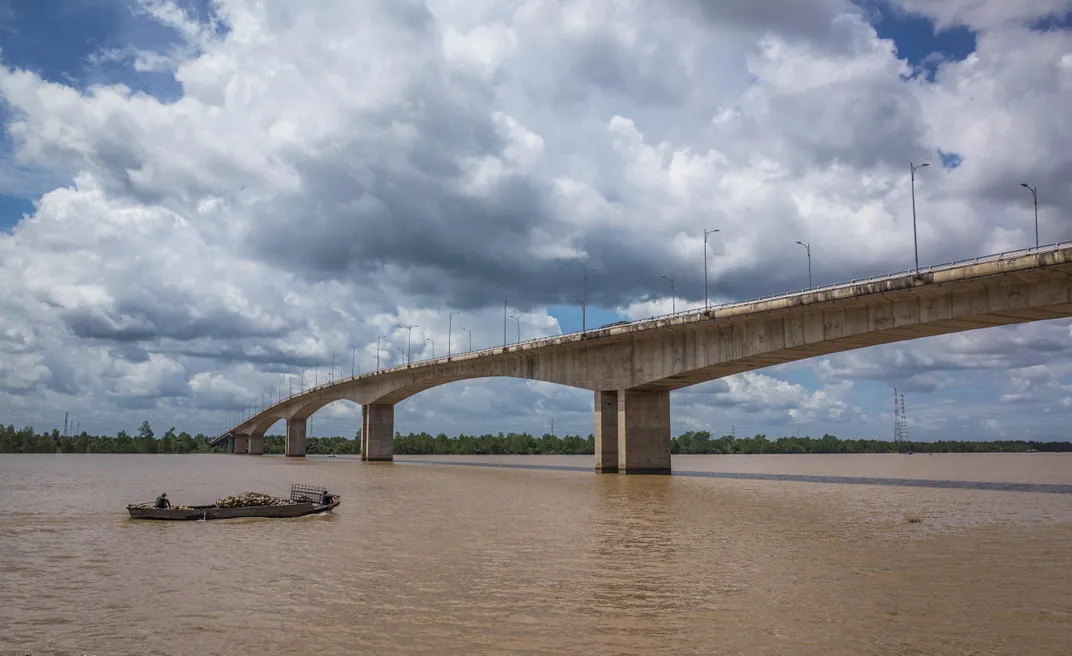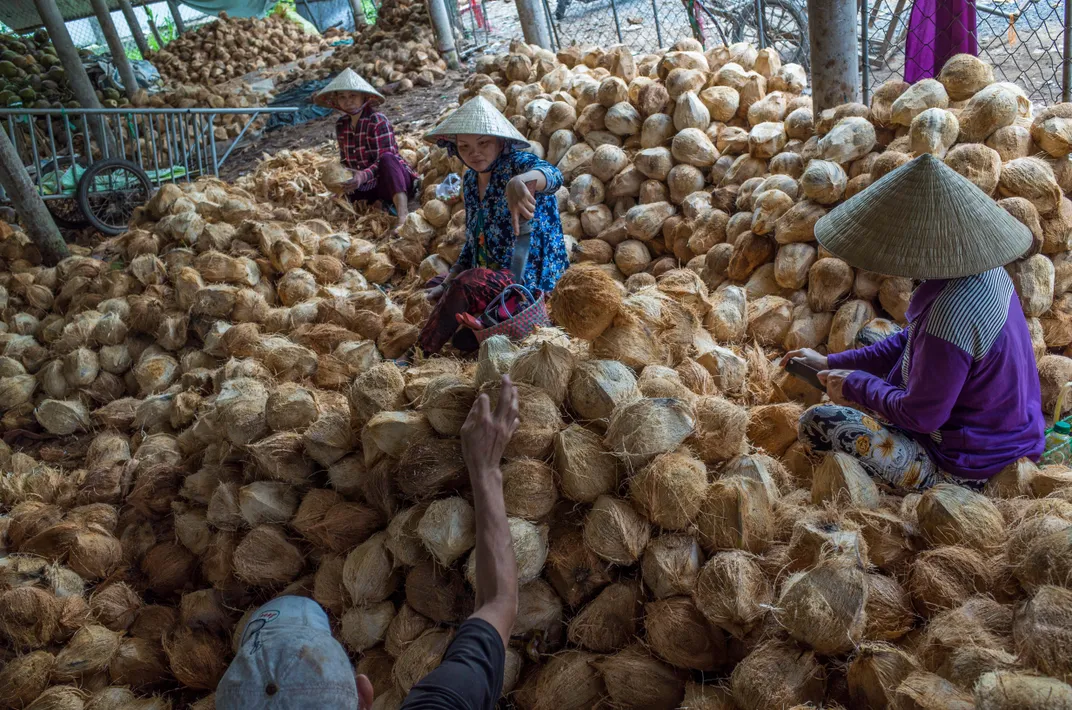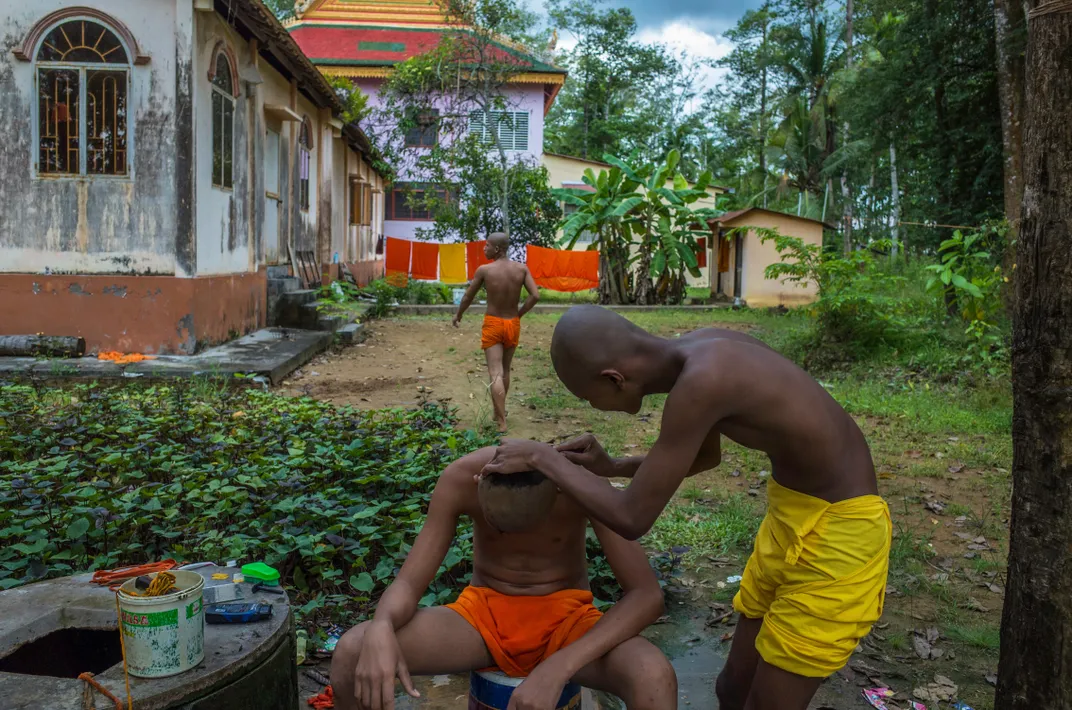Revisiting Vietnam 50 Years After the Tet Offensive
The battles of 1968 are long over. But the struggle to confront the truth goes on
/https://tf-cmsv2-smithsonianmag-media.s3.amazonaws.com/filer/93/49/9349e010-dcf5-4014-855e-7b287b5f73ca/janfeb2018_m10_vietnamphotoessay.jpg)
A few years ago, a French-German TV crew visited my home in Hanoi for an interview on how Vietnam had changed since the end of the war with America. We talked of postwar problems, the people’s achievements, the old and new generations of leaders, and the country’s aspirations. We also talked of history, of course.
At one point, our conversation veered toward the events surrounding the Tet Offensive, in January 1968. It took but a few seconds for the government media minder, an official of the foreign ministry, to stop us. Agitated, she told me to stay inside while she took the producer and reporter out to my garden, where she threatened to shut down the production if the subject was broached again, or even if we returned to the general topic of 1968.
Later, I told her about all the information on the war that was freely available: books, documentary films, television shows, photographs, articles, essays. I showed her Google listings. I tried to point out that the more she tried to suppress the information, the more that journalists would dig deeper. I could barely hide my anger.
“You will not talk about that,” she kept saying. “You will not.”
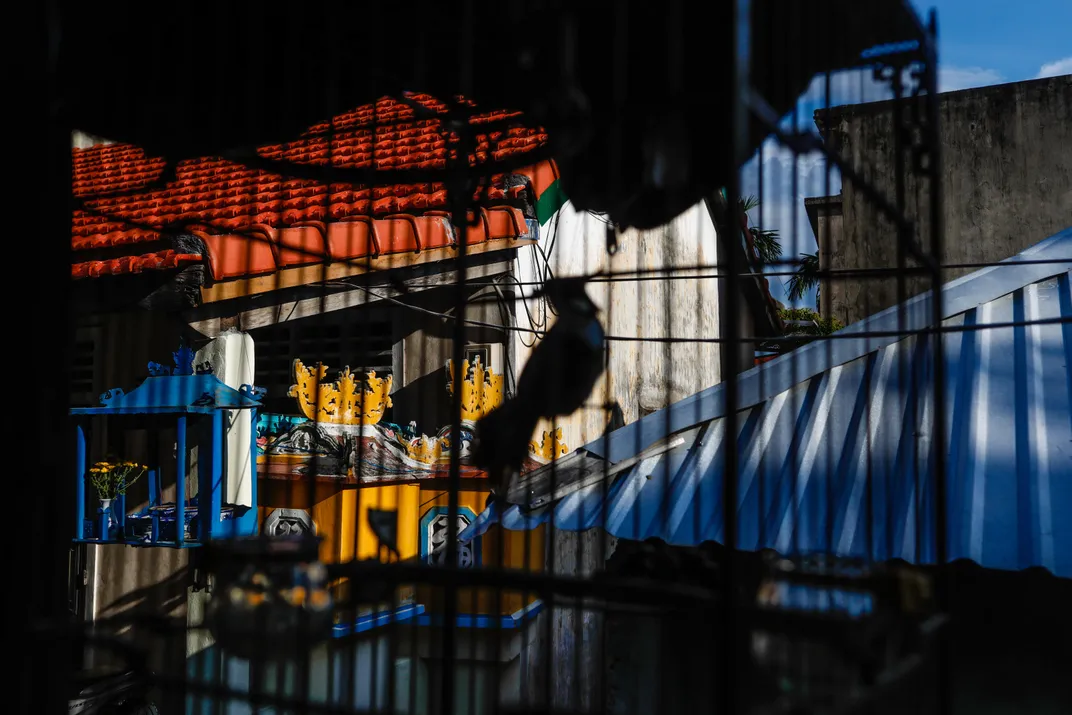
**********
Fifty years after the fact, the Tet Offensive is recognized as the pivotal event in the pivotal year of the war—a military loss for North Vietnam but a political victory, as the shock of the attack began to turn American public opinion against the conflict. Breaking a truce that was supposed to allow the warring sides to celebrate Tet, or the Lunar New Year, communist leaders sent tens of thousands of soldiers and Vietcong guerrillas into cities and military bases all over South Vietnam, including Saigon, home of the U.S. Embassy. They believed they could take the Army of the Republic of Vietnam and its U.S. allies by surprise, and inspire a general uprising that would overthrow the government of the south. They succeeded in the first mission but failed in the second. They sustained heart-stopping losses—the U.S. reported 40,000 enemy casualties—and quickly ceded whatever ground they’d taken.
But not in Hue, the former imperial capital, in central Vietnam. The battle for Hue ground on for 26 days, and proved to be one of the bloodiest of the war. The dead among northern forces numbered 5,000 or more; the Americans and South Vietnamese suffered more than 600 dead and almost 3,200 wounded. In Vietnam today, this event is described in heroic terms, and the state propaganda machine still goes into overdrive to celebrate it every few years.
But of a massacre of thousands of Hue civilians? Not a word.
Shortly after the communists were driven out, people in Hue began to discover mass graves. South Vietnamese government television channels showed horrifying scenes of grieving families and unidentified corpses that had been hastily buried. Some were presumed to be the intellectuals and teachers, government cadres, civil servants and administrators who had gone missing during the communist occupation. Physical evidence showed that many of them had been tied, blindfolded and shot point-blank, or buried alive. No one knows exactly how many people were killed; several accounts put it at more than 3,000, most of them civilians. They died in a deliberate campaign by the communist forces to destroy Hue’s government. This massacre is deeply embedded in Western accounts of the battle for Hue but little-discussed in Vietnam. And yet, in what was, for the Vietnamese people, a civil war, the fratricidal nature of this event could not have been more stark.
This is what I had begun to tell the journalists about when the government minder cut us off.
**********
In January 1968, my family was living in Da Nang, but to celebrate Tet we made the hour’s drive to my paternal grandparents’ house in Hue.
My father was the region’s civilian governor, and whenever we went to Hue we stayed in a gorgeous government guesthouse—a mansion, really, immaculately kept, with Art Deco arches and curves. I loved running back and forth in the corridors, on the terrace or in the many gardens.
On the first night of the Lunar New Year, January 30, we heard what we thought were firecrackers. The sound was actually gunfire. Bullets were flying in every direction. Flares occasionally lit the sky, but the grounds around our house were dark. We had no way of seeing that communist troops had surrounded us.
At two o’clock on the morning of January 31, they came into the house and took my father upstairs, along with other men they’d rounded up in the neighborhood.
They herded about a hundred of us, mostly women and children, into a neighboring basement. In the dark, my mother tried to keep my two sisters and me quiet. We were dazed and afraid. A communist soldier gave a lecture about coming as our “liberators,” “securing our city” and “driving out imperialist invading forces.” I was 9 years old; I could barely understand anything he said in his northern accent, but he seemed menacing. Until that night, the war had been something that happened in the forests and mountains or in villages far away.
It was two days before we were allowed to go back into the guesthouse. Mattresses and clothes littered the rooms, and the furniture had been thrown all over. Upstairs, my father was sitting on the floor with a number of other men. We huddled next to him, but we were so afraid we were unable to speak.
After just a few minutes, soldiers told us to leave. On the way out, we stole a look into my parents’ room. My father’s treasured books were on the floor, and the suitcases had been rifled through. Someone had cut a hole through my mother’s traveling jewelry box. We left empty-handed and returned to our basement prison with no idea of what was in store.
Two nights later, my mother motioned me toward the one tiny window in the basement. I climbed on the bed and strained to look out. The soldiers had lined up a row of men and tied their elbows behind their backs. After a while, they marched the men away. I saw my father among them.
**********
A week later, the communist soldiers withdrew from the government house. South Vietnamese and American troops freed us and moved us to Hue University, by the bank of the Perfume River. The campus had been turned into a refugee center and makeshift hospital. From the sixth floor, I could see the fighting across the river. I also saw people with horrendous wounds brought into the various floors below. Most days we sat dazed on a straw mat while the adults gathered in corners for whispered conversations. After weeks of house-to-house fighting, the soldiers recaptured the Citadel, the heart of the old imperial city, on February 24.
When we managed to get back to Da Nang, our house was full of relatives who had also fled from Hue. We had no news about my father, and no way of finding any.
For the first year, we did not tell my grandfather that my father had been taken—we were afraid he would die of a heart attack. My mother went to the neighbors’ houses to cry so he wouldn’t find out.
Months later, news came about the mass graves. My mother went to Hue to look for my father, but the sight of the decaying and maimed corpses horrified her. She never went back.
Where the Ashes Are: The Odyssey of a Vietnamese Family
In 1968 Nguyen Qui Duc was nine years old, his father was a high-ranking civil servant in the South Vietnamese government, and his mother was a school principal. Then the Viet Cong launched their Tet offensive, and the Nguyen family’s comfortable life was destroyed.
I grew up not quite an orphan: While other families buried their dead, set up an altar and had some kind of closure, ours had this open secret. Schoolmates didn’t quite know what to do with me, and for years I was ostracized. I grew into a morose adolescent, but I found consolation in the antiwar songs of Trinh Cong Son, who lamented the bodies “floating in the river, drying out in rice fields, lying on city roofs, under the temple eaves, under cold rainy days, bodies of the aged next to the innocent....” Although the government banned his music, it seemed that all of South Vietnam listened to it.
In the months and then the years following the Tet Offensive, we were terrorized by the thought that a communist victory anywhere in the south would mean more massacres, more people buried alive. It would be even worse than Tet ’68.
**********
That fear shaped my fate: As communist forces closed in on Saigon in 1975, my uncles arranged for me to go to the United States. Like my sister Dieu-Ha before me, I became one of millions of Viet Kieu—“overseas Vietnamese”—but my mother remained in Vietnam, stuck in the chaos that followed the communist victory that April.
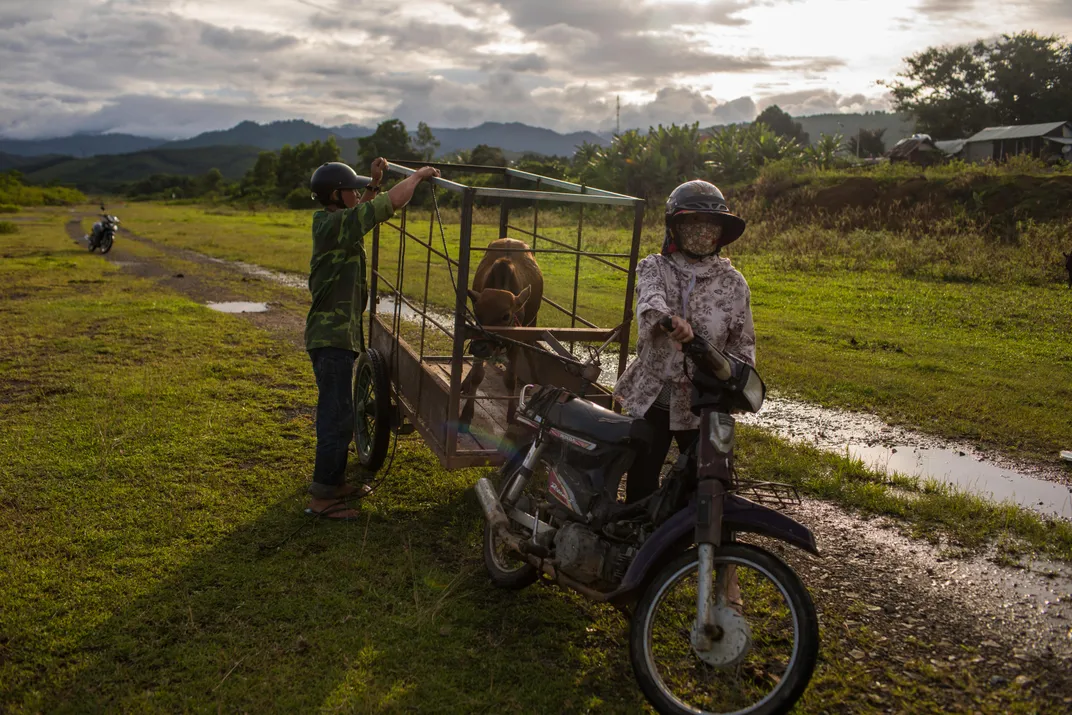
While I spent my adolescence coming to grips with America’s abundance and frenetic energy, she was stripped of her job as the principal of a school and reduced to poverty. After moving into her sister’s house, in what had been renamed Ho Chi Minh City, she sometimes sold soup on the streets to support herself and my sister Dieu-Quynh, who proved to be mentally ill and would die too young.
In 1973, the leaders of the north and south signed the agreement that led to America’s exit from the war and began a prisoner exchange. One of those exchanged prisoners managed to smuggle out a letter to my mother. “I am lucky to be alive,” my father wrote. It was the first time in five years we’d had any word either from or about him. “I hope that you are able to take care of the children, a task that I am anxious to share with you.” It took four more years of searching for her to find out that he was being held in a remote area near the Chinese border. She set out to visit him, and discovered that he had been reduced to a thin old man. But his spirits seemed high.
He was released in 1980, after 12 years’ captivity without a trial. Four years later, the communist government allowed him and my mother to emigrate to the United States. I hadn’t seen him for 16 years, during which I had come of age, gotten a fitful education and set out on a haphazard path that would lead to a career as a radio journalist. When I met my parents at the airport in San Francisco, he was astonishingly healthy and sane. She was less sure of herself than I had remembered.
We spent many months rediscovering each other, but we moved backward in time, taking the most recent years first. We never talked of 1968; it was too overwhelming. He wrote about his prison years and published a book of poems he had composed in captivity—and kept in his memory until he left the country. He used one phrase as a preface: I suffer, therefore I am. He read the books and saw the documentaries about the Tet Offensive, but he said no more about it until he died, in 2000.
Despite all that history, I began to consider moving back to Vietnam. It was still my country, after all, and Vietnamese traditionally have a strong sense of place. I finally moved in 2006—to the city where my fathers’ captors had directed the war.
**********
I’ve made many new friends in Hanoi, young and old, but their curiosity about a Viet Kieu who came back from the United States has not extended to the details of my experience of the war. Some of them have lived and heard enough of it, and many had an equally traumatic time of it. Plus, Vietnam is a youthful country—the median age is 30 years. The majority of the people were born after the war, and long after 1968. So they are forward-looking; “integrating with the globalized world” is a national mantra.
In nightclubs and cafés, the music of Trinh Cong Son is still popular—the love songs, not the ones about the destruction of war. Those are, once again, banned. My friend Tran Anh Quan, an artist in his 40s who is rather critical of the government, often tells me I am obsessed with the past. “You don’t know what else the authorities hide,” Quan tells me. “We don’t even know the truth about what’s happening in our society today. Forget the past.”
Occasionally, I can. Then comes a moment like the time a real estate developer approached me with his business plan for Hue. “I want to redevelop the whole attitude there and change the tourist industry,” he told me. Hue certainly attracts a lot of tourists. Many come for a past far removed: They visit ancient royal tombs, the refurbished Citadel and the temples from the Nguyen dynasty, which lasted from 1802 to 1945. The tour guides tell all about that past, but they ignore the bullet holes pocking the walls of the buildings within the Citadel and elsewhere. No tourists are taken to the massacre grave sites, the way tourists are taken to the Khmer Rouge’s infamous “killing fields” in Cambodia.
I asked the developer about the ghosts in Hue—about the feelings among the people there who are living with the memories of the dead from 1968, about their feelings toward northerners like him. He had no idea what I was talking about.
After 50 years, I know my memories from that era will last my lifetime, but I wonder whether the national silence about 1968 will ever be lifted, and the anger I felt when I was negotiating with the government’s media minder still burns. Ultimately, she relented and allowed me to resume my conversation with the French-German team on camera. But I can find no record that the interview ever aired in Vietnam.
Recently an acquaintance of mine, the writer Bao Ninh, famed for his novel The Sorrow of War, pointed a finger at me and said: “You will. Write about it. You and me. We survived that Tet.” Sure, it was the American war, as Vietnamese remember it, and the Cold War was a big part of it. But the Tet Offensive and 1968 was us: We Vietnamese killed one another.
So now I think of the media minder: “You will not.” And I think of Bao Ninh: “You will.” One wanted me to honor a version of history written by the living, the winners. The other wishes me to honor the dead and their memories.
1968: A war, a year, a memory forever being buried and resurrected.
A Note to our Readers
Smithsonian magazine participates in affiliate link advertising programs. If you purchase an item through these links, we receive a commission.
